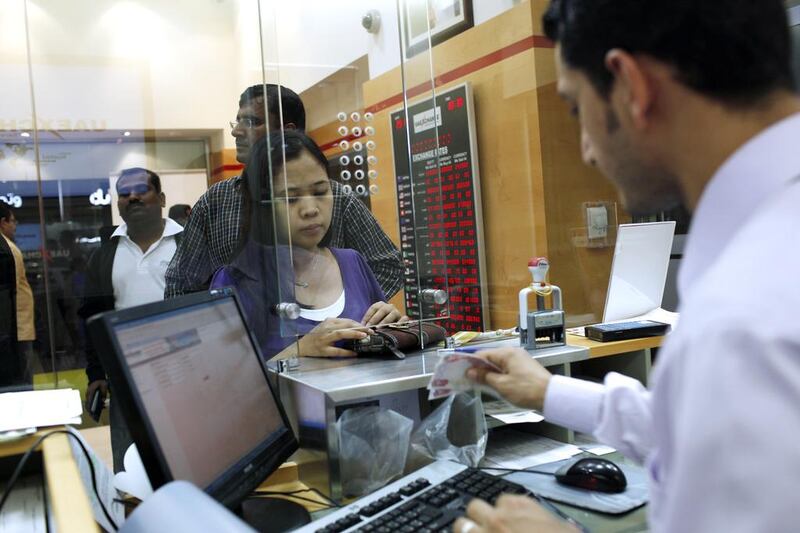Low oil prices are not expected to make a major dent in remittances from the Arabian Gulf to the Philippines, even as the region’s governments trim budgets and economies in the region slow, analysts said.
The IMF has repeatedly cut Gulf growth forecasts as the oil price sinks below US$30 per barrel. Saudi Arabia is expected to grow at just 1.2 per cent this year, the slowest pace for 14 years. The UAE has also had its growth forecasts trimmed to 2.6 per cent this year.
But economists do not think that slower growth would necessarily lead to significantly lower remittance flows into the Philippines.
“We don’t expect a strong deterioration in remittance flows,” said Joseph Incalcaterra, an Asia economist at HSBC. “Remittances from the Gulf have been historically resilient.”
The Gulf accounts for about 22 per cent of remittances to the Philippines.
The bloc is second only to the United States, which accounts for 47 per cent of remittances. Filipino nationals employed in the domestic and services sectors in the UAE are unlikely to lose their jobs even as public spending falls, Mr Incalcaterra said.
Diversification efforts in the UAE aim to “restructure the economy towards services, which means there should be steady employment in the services sector”, he said.
“Jobs in the domestic sector don’t get cut without high cutbacks in household consumption.”
Gareth Leather, an Asia economist at Capital Economics, said: “Problems in the Gulf are likely to mean that growth in remittances will slow, but probably not dramatically.”
Economic growth in the Philippines is picking up. GDP increased 6.3 per cent in the three months to December from a year earlier, the Philippine statistics authority said in Manila yesterday.
Higher employment in the Philippines – with unemployment at a record low of 5.6 per cent – can actually reduce remittances, Mr Leather said. “Strong growth means less need for families to go abroad and families see less need to send money back,” he said.
But these domestic improvements are unlikely to reduce net migration from the Philippines.
“It boils down to demographics. The group most likely to go abroad is growing faster than the overall population,” said Mr Incalcaterra.
“Growth has picked up, but not enough for the population. There’s still a lot of regional inequality. A lot of the growth is focused in central Manila but there are still areas where [economic] opportunities are limited,” he said.
Slower growth in Saudi Arabia, which is the largest source of remittances to the Philippines from this region, will have a bigger effect, Mr Incalcaterra said. That is because the country has a larger Filipino expat population employed in the oil and gas sector, which is seeing investment fall as the oil price slides.
Gulf governments are cutting infrastructure budgets, while maintaining spending on their public sectors – and national employees on public sector wage bills. This means that public spending cuts in the Gulf are focused “mainly on construction workers”, said William Jackson, the senior emerging markets economist at Capital Economics.
Gwen Ching, a client booker at maid recruitment website MaidCv, said that her company had not seen a slowdown in demand for workers from the Philippines.
“Filipino maids are even more in demand than before – we are getting a lot of feedback from customers that they want Filipino maids,” she said.
abouyamourn@thenational.ae
Follow The National's Business section on Twitter





